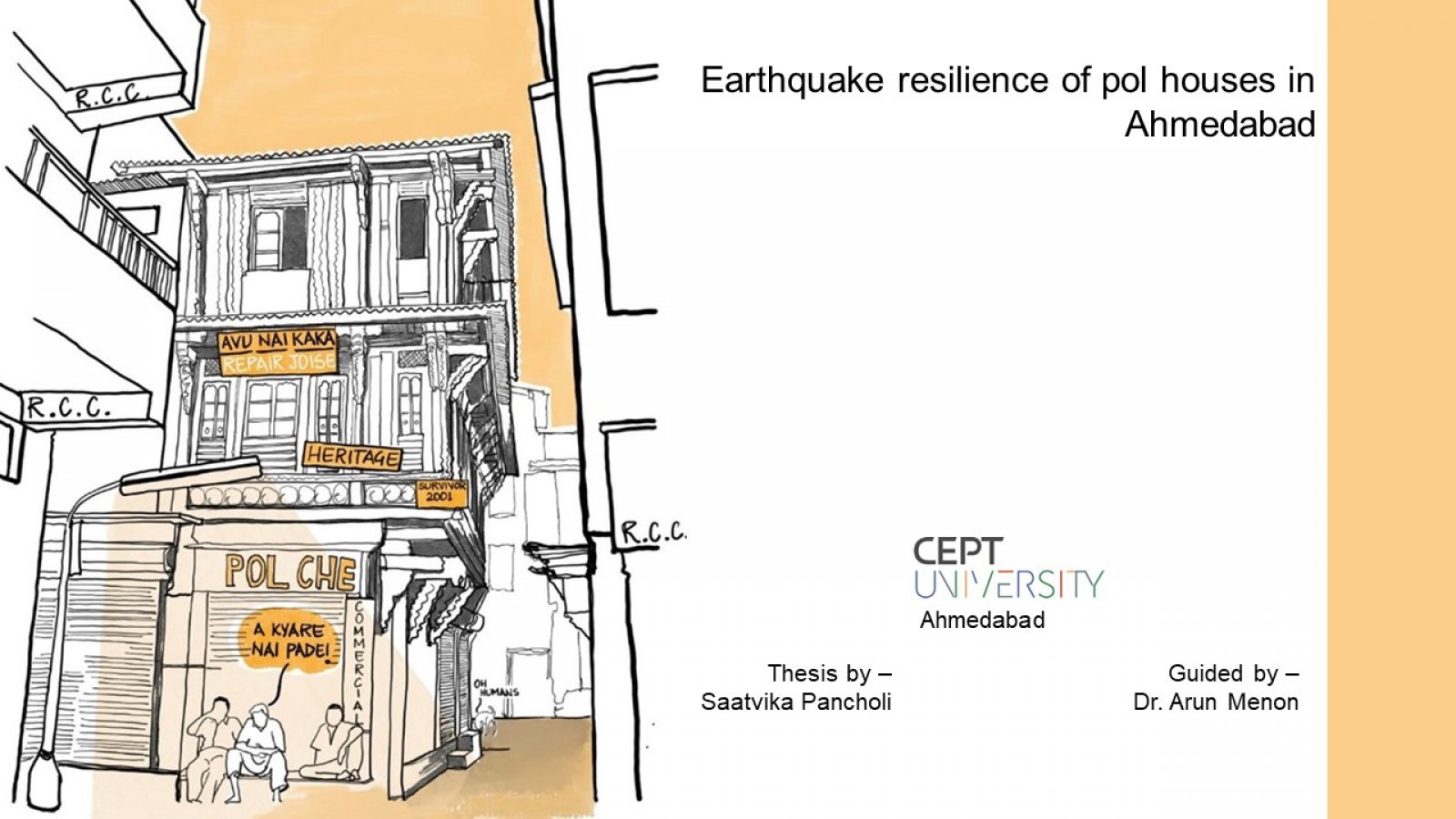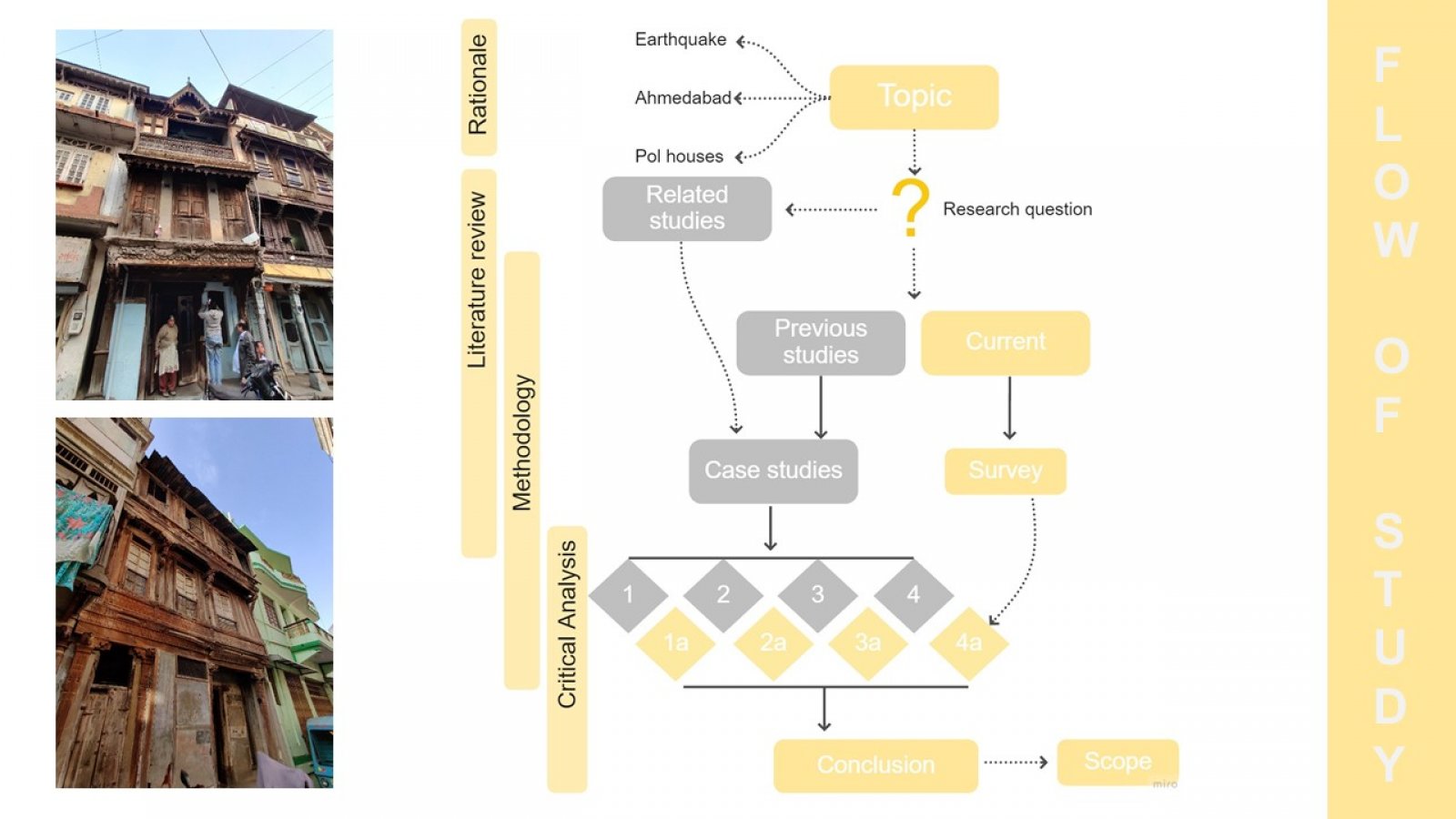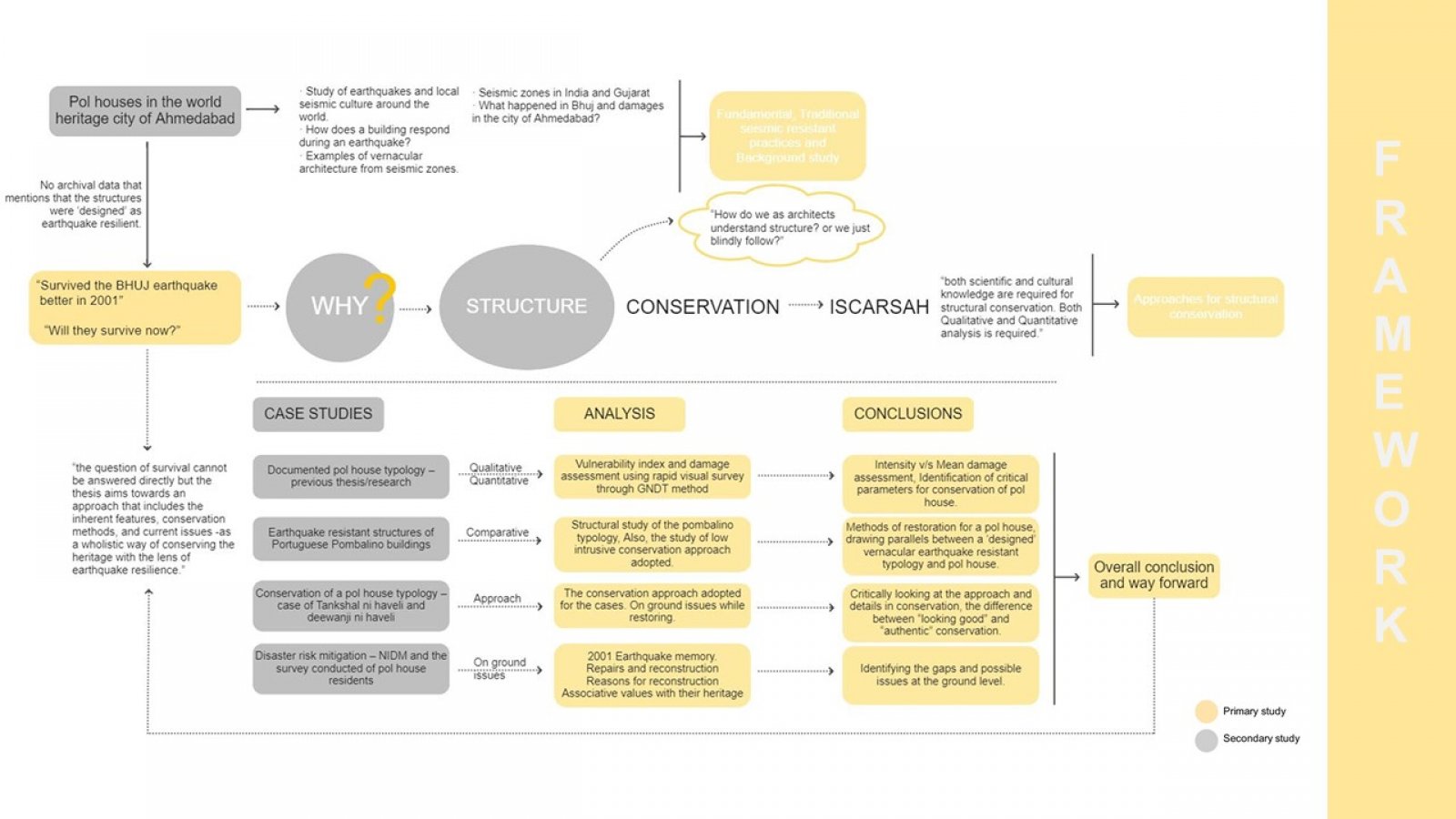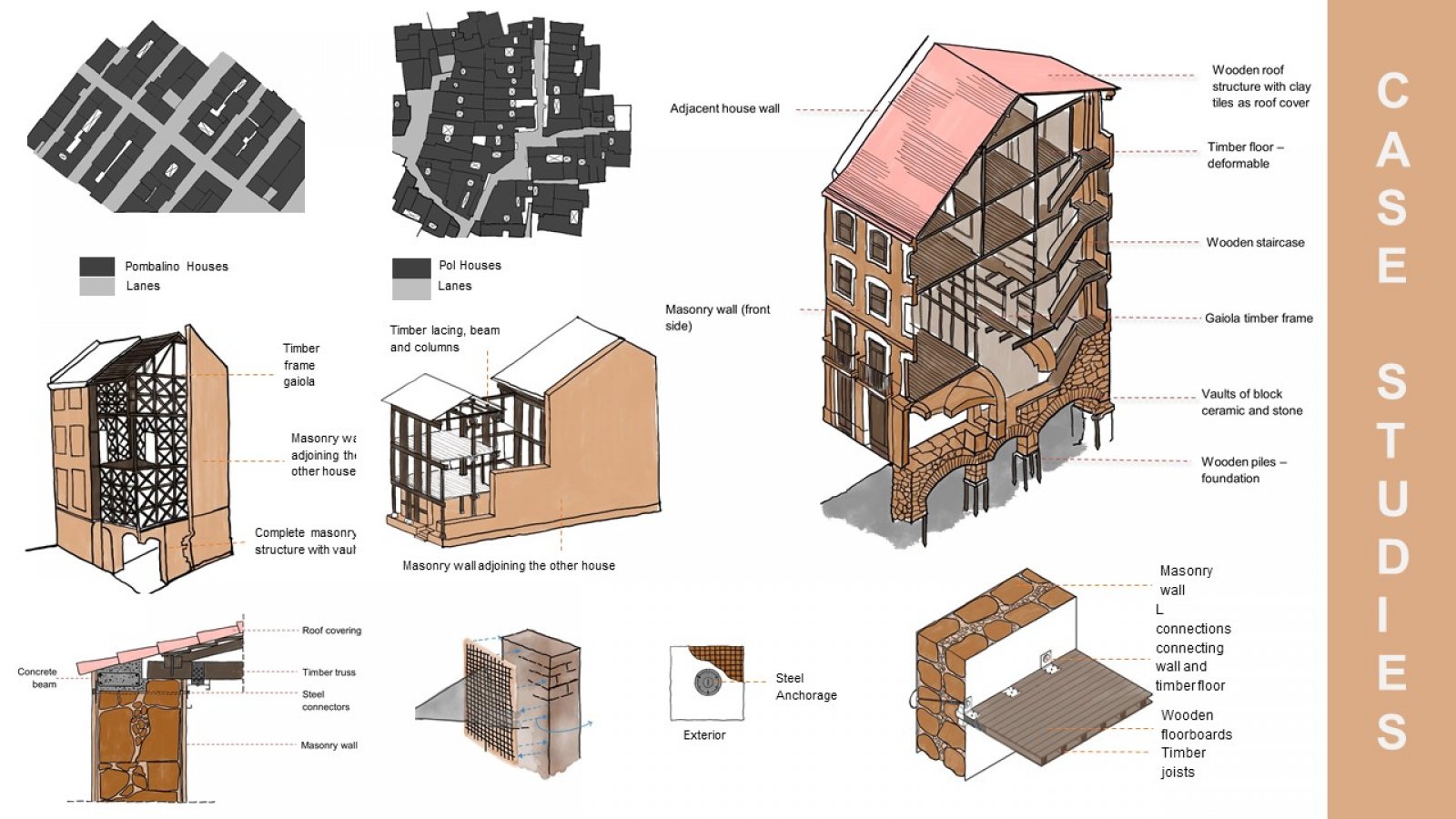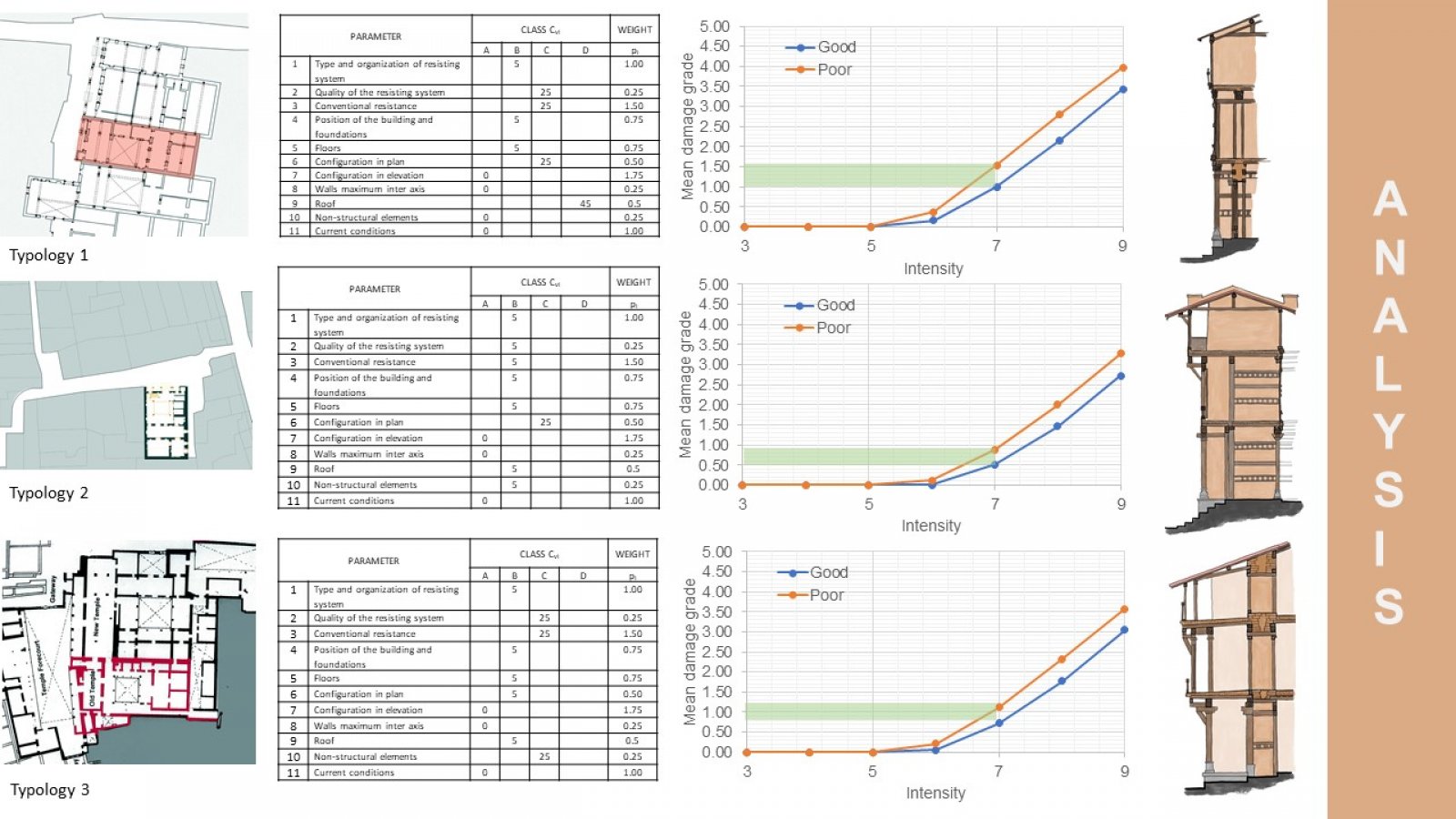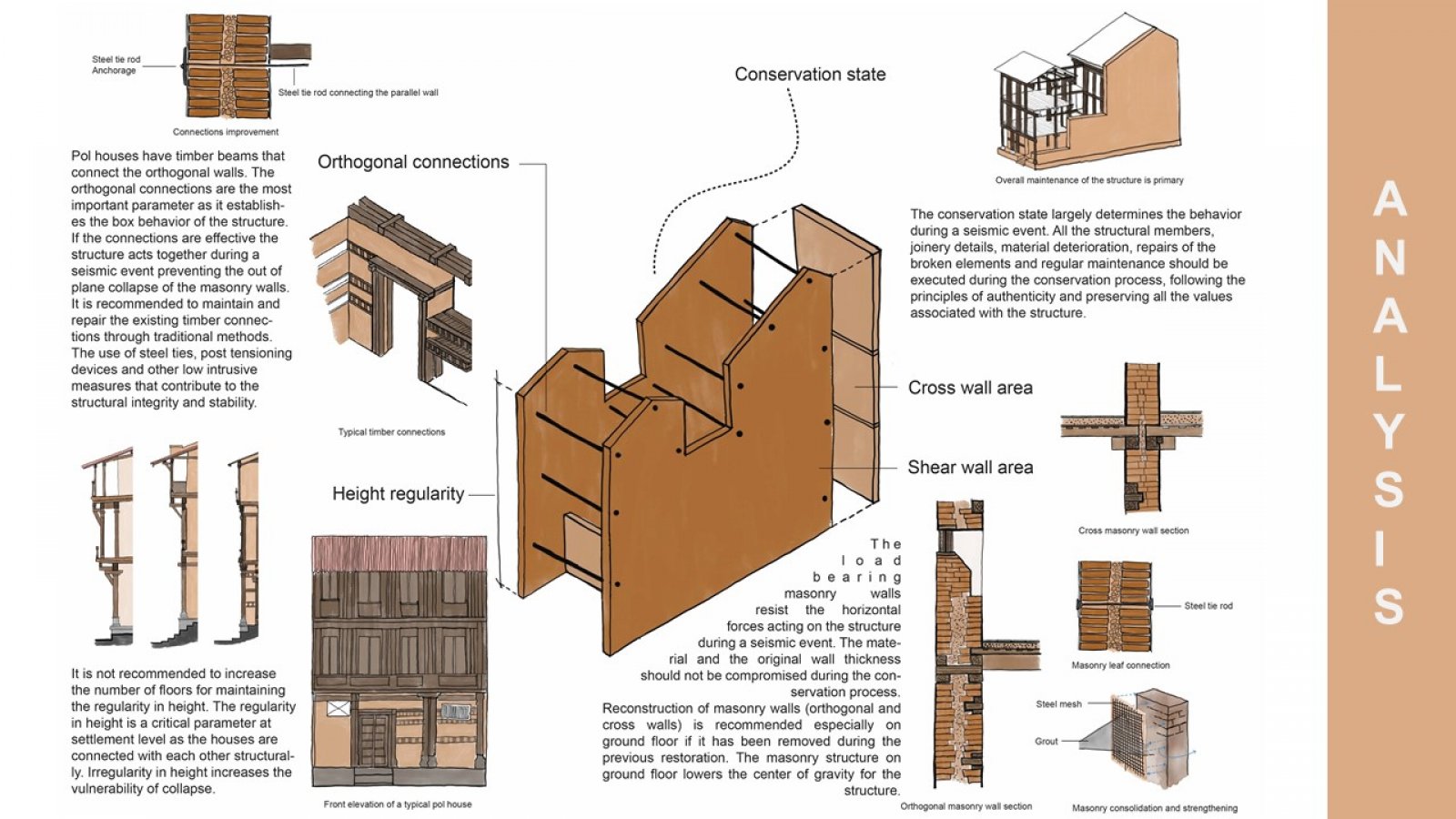Your browser is out-of-date!
For a richer surfing experience on our website, please update your browser. Update my browser now!
For a richer surfing experience on our website, please update your browser. Update my browser now!
The research is focused on the identification of earthquake-resilient features of pol houses that were responsible for their survival in the devasting Bhuj earthquake of 2001, which is centered around the broad question that ‘will the heritage city of Ahmedabad survive another earthquake?’ the question of survival depends on the critical understanding of the structure and its conservation, hence the study adopts both qualitative and quantitative methodologies for the analysis. The thesis adopts the method of rapid visual survey through GNDT (Gruppo Nazionale per la Difesa dai Terremoti) methodology for mean damage assessment of three typologies of pol houses. This led to the formulation of vulnerability graphs and the identification of critical parameters. The vulnerability graphs for good and poor conditions diverged in all the cases. Hence the conservation state is one of the most critical parameters that would determine the damage grade. A comparative analysis of pol house structure with pombalino structures of Portugal helped to draw parallels between the typologies and seismic strengthening measures. The study also connects with on-ground issues, earthquake memory, and conservation approaches by conducting resident surveys and studying previous restoration projects in Ahmedabad. The thesis concludes with the identification of critical parameters that cannot be compromised during the conservation to preserve the structural integrity and hence the authenticity of the pol houses. The study paves the way forward for the analysis of the structures at the settlement level, disaster risk reduction, and a detailed resident survey for developing the policies. To view a five minute elevator pitch of this thesis' research idea(s), please click on the link displayed. https://drive.google.com/file/d/1U_RezYjkZo0I5f7oPEYZkK5pRBSuvhVT/view?usp=sharing
View Additional Work